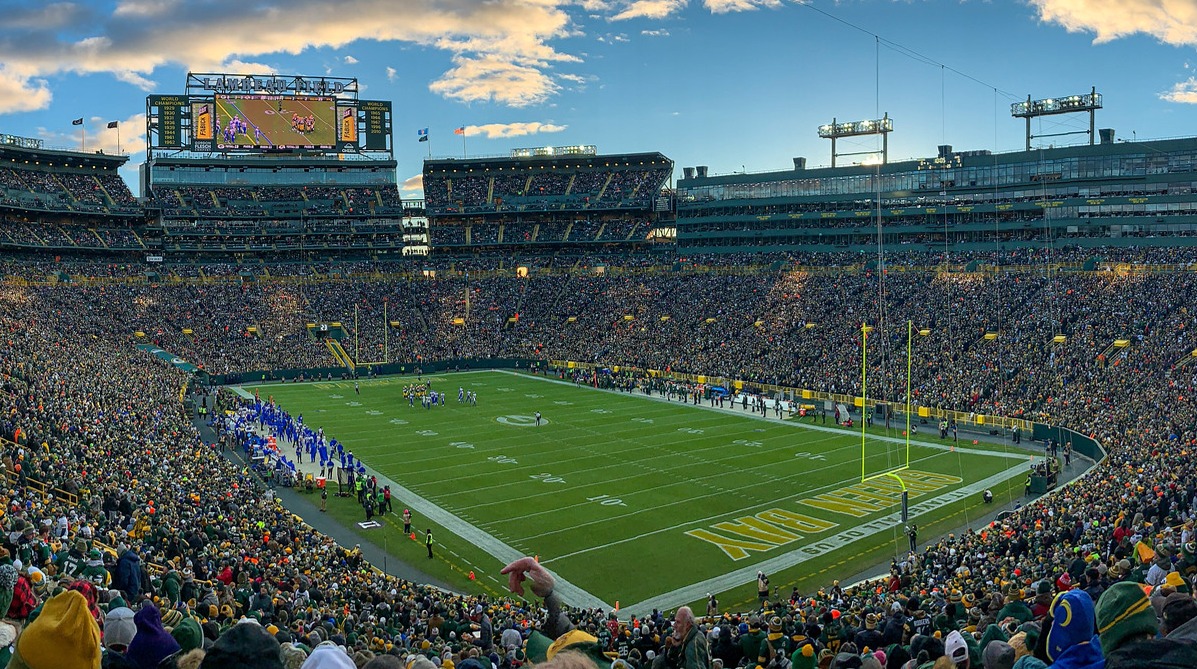
Lambeau Field, named after the Green Bay Packers founder, Earl “Curly” Lambeau, is steeped in rich history and tradition. It is a symbol of the long-standing success and legacy of the Packers, one of the oldest teams in the National Football League (NFL). Not only has this stadium hosted countless games that have influenced NFL lines, but it has also been a pilgrimage for many football fans and a testament to the endurance and loyalty of the Packers’ fandom, affectionately known as the Cheeseheads.
Situated in Green Bay, Wis., this stadium is more than just a football venue. This article delves into the iconic Lambeau Field, exploring its history, architectural design, significant events, and its role in shaping the identity of the Green Bay Packers.
The History of Lambeau Field
Officially opened in 1957 as City Stadium and later renamed Lambeau Field in 1965 following the death of Curly Lambeau, the “Frozen Tundra” has seen a myriad of memorable moments. It was conceived out of necessity, as the old City Stadium had become too small to accommodate the team’s growing popularity. Initially seating little over 32,000 spectators, Lambeau Field has grown over the decades and now accommodates over 80,000, making it the third-largest NFL stadium.
Notably, Lambeau Field is the longest continuously occupied stadium in the NFL. It has weathered the icy Wisconsin winters and roaring crowds, standing as a testament to the team’s rich history and success, including multiple NFL Championships and Super Bowl victories.
Architectural Design of Lambeau Field
Lambeau Field’s design embodies a blend of tradition and innovation. Its bowl shape is a nod to the classic football stadiums of the early 20th century, while its renovations have incorporated modern amenities and design features to enhance the fan experience.
Several key renovations have transformed Lambeau Field while maintaining its historic charm. These include adding luxury boxes and club seats, a new HD video screen, an extended upper deck, and the Atrium – a five-story structure housing the Packers Pro Shop, Packers Hall of Fame, and multiple restaurants.
Despite these modernizations, the field maintains its iconic “tundra” identity, opting to forgo a domed roof and keep the natural grass playing surface, preserving the classic, hard-nosed football environment that Lambeau is known for.
Significant Events at Lambeau Field
Over its lifetime, Lambeau Field has been the backdrop to some of the NFL’s most significant events. The most notable of these is the “Ice Bowl,” the 1967 NFL Championship game against the Dallas Cowboys, where the Packers triumphed in bone-chilling -13-degree weather. After playing on an icy field where numerous players were treated for frostbite, Lambeau Field got its moniker “The Frozen Tundra.”
The field has hosted football games and welcomed other sports, such as soccer and hockey contests, and entertainment events like concerts. Regardless of the event, Lambeau Field provides a unique and historic venue that enhances the experience for athletes and fans.
Lambeau Field and the Identity of the Green Bay Packers
Lambeau Field’s connection to the identity of the Packers cannot be overstated. Its intimate setting, with fans close to the action, has created an intimidating atmosphere for visiting teams, known as the “Lambeau advantage.”
The loyalty of the Packers’ fans, who have sold out every home game since 1960, is epitomized in the “Lambeau Leap” tradition – where players leap into the arms of fans in the end zone after scoring a touchdown. This connection between players and fans is a tangible symbol of the community spirit that defines the Packers and their home stadium.
Conclusion
Lambeau Field is much more than a stadium; it’s a monument to the enduring spirit and success of the Green Bay Packers. Its rich history, architectural charm, and the unforgettable events it has hosted contribute to its status as one of the most iconic venues in all of sports.
Whether it’s the roar of the crowd on a crisp autumn afternoon, the sight of a player leaping into the stands after a touchdown, or the camaraderie the fans feel, every aspect of Lambeau Field reflects the unique identity of the Packers. As the team and its fans look to the future, Lambeau Field will undoubtedly continue to play a significant role in shaping the narrative of the beloved Green Bay Packers.